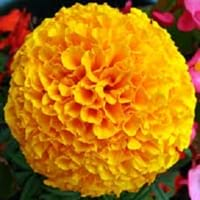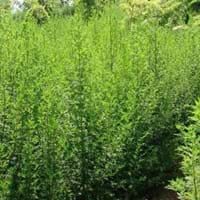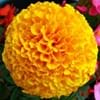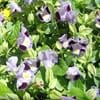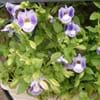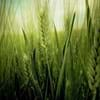Type
Flowering Plants
Shrub
Origin
Mexico, Central America
Hybrid origin
Types
Not Available
Not available
Number of Varieties
Not Available
Habitat
Forest edges, gardens, Grassland, Homesteads, Rocky areas, Woods
Subtropical forests, Tropical Forests
USDA Hardiness Zone
9-11
Not Available
AHS Heat Zone
12 - 1
12-8
Sunset Zone
A1, A2, A3, H1, H2, 1a, 1b, 2a, 2b, 3a, 3b, 4, 5, 6, 7, 8, 9, 10, 11, 12, 13, 14, 15, 16, 17, 18, 19, 20, 21, 22, 23, 24
Not Available
Habit
Upright/Erect
Upright/Erect
Flower Color
White, Ivory
Not Available
Flower Color Modifier
Bicolor
Not Available
Fruit Color
Not Available
Not Available
Leaf Color in Spring
Dark Green
Not Available
Leaf Color in Summer
Dark Green
Not Available
Leaf Color in Fall
Dark Green
Not Available
Leaf Color in Winter
Light Green
Not Available
Leaf Shape
Arrowhead
bipinnate
Plant Season
Summer, Fall
Spring, Summer, Fall
Sunlight
Full Sun
Full Sun, Partial Sun
Growth Rate
Very Fast
Medium
Type of Soil
Loam, Sand
Loam, Sand
The pH of Soil
Neutral, Alkaline
Acidic, Neutral
Soil Drainage
Well drained
Well drained
Bloom Time
Indeterminate
Not Available
Tolerances
Drought
Drought, Salt
Where to Plant?
Ground, Pot
Ground, Pot
How to Plant?
Stem Planting, Vegetative Reproduction
Seedlings
Plant Maintenance
Medium
Medium
Watering Requirements
Allow soil to be completely dry in between waterings, Requires regular watering, Water occasionally
Average Water Needs
In Summer
Lots of watering
Lots of watering
In Spring
Moderate
Moderate
In Winter
Average Water
Average Water
Soil pH
Slightly Alkaline
Acidic, Neutral
Soil Type
Well drained
Loam, Sand
Soil Drainage Capacity
Well drained
Well drained
Sun Exposure
Bright Indirect Sunlight
Full Sun, Partial Sun
Pruning
Prune regularly
Remove damaged leaves, Remove dead branches, Remove dead leaves
Fertilizers
All-Purpose Liquid Fertilizer
All-Purpose Liquid Fertilizer, Apply N-P-K
Pests and Diseases
Red blotch
Aphids, Gray leaf blight, Root rot
Plant Tolerance
Drought
Drought, Salt
Flowers
Showy
Insignificant
Flower Petal Number
Double
Not Available
Fragrant Bark/Stem
Yes
Yes
Foliage Texture
Medium
Not Available
Foliage Sheen
Matte
Not Available
Attracts
Butterflies
Insects, Not Available
Allergy
no allergic reactions
Pollen
Aesthetic Uses
Beautification
Not Used For Aesthetic Purpose
Beauty Benefits
Not Available
Skin inflammation
Environmental Uses
Air purification
Air purification
Medicinal Uses
Gastrointestinal disorders, Skin Disorders
Antioxidants, Fever, Inflammation, Malaria
Part of Plant Used
Whole plant
Leaves
Other Uses
Decoration Purposes, Not Available
Medicinal oil, Oil is used for aromatherapy
Used As Indoor Plant
Yes
No
Used As Outdoor Plant
Yes
Yes
Garden Design
Foundation, Houseplant, Mixed Border, Rock Garden
Foundation, Mixed Border, Rock Garden, Wall
Botanical Name
TAGETES erecta 'French Vanilla'
Artemisia annua
Common Name
African Marigold
sweet wormwood, sweet annie, sweet sagewort, annual mugwort
In Hindi
अफ्रीकी गेंदा
Artemisia
In German
Studentenblume
Artemisia
In French
Marigold africaine
Artemisia
In Spanish
caléndula africana
Artemisia
In Greek
Αφρικής κατιφές
Αρτεμίσια
In Portuguese
marigold africano
Artemisia
In Polish
afrykański nagietka
Artemisia
In Latin
African pingit vaccinia caltha
Artemisia
Phylum
Not Available
Magnoliophyta
Class
Magnoliopsida
Magnoliopsida
Order
Asterales
Asterales
Family
Asteraceae
Asteraceae
Clade
Angiosperms, Asterids, Eudicots
Angiosperms, Asterids, Eudicots
Tribe
Tageteae
Anthemideae
Subfamily
Asteroideae
Asteroideae
Difference Between African Marigold and Artemisia
If you are confused whether African Marigold or Artemisia are same, here are some features about those plants to help you choose better. Many people think that these two plants have the same characteristics, but one can see African Marigold and Artemisia Information and learn more about it. Fertilizers required for proper growth of African Marigold are All-Purpose Liquid Fertilizer, whereas for Artemisia fertilizers required are All-Purpose Liquid Fertilizer and Apply N-P-K. Hence, one should know the basic difference between African Marigold and Artemisia if you are planning to have them in your garden to enhance its beauty.
<
Flowering PlantsImportance of African Marigold and Artemisia
Want to have the most appropriate plant for your garden? You might want to know the importance of African Marigold and Artemisia. Basically, these two plants vary in many aspects. Compare African Marigold and Artemisia as they differ in many characteristics such as their life, care, benefits, facts, etc. Every gardener must at least have the slightest clue about the plants he wants to plant in his garden. Compare their benefits, which differ in many ways like facts and uses. The medicinal use of African Marigold is Gastrointestinal disorders and Skin Disorders whereas of Artemisia is Antioxidants, Fever, Inflammation and Malaria. African Marigold has beauty benefits as follows: Not Available while Artemisia has beauty benefits as follows: Not Available.
Compare Facts of African Marigold vs Artemisia
How to choose the best garden plant for your garden depending upon its facts? Here garden plant comparison will help you to solve this query. Compare the facts of African Marigold vs Artemisia and know which one to choose. As garden plants have benefits and other uses, allergy is also a major drawback of plants for some people. Allergic reactions of African Marigold are no allergic reactions whereas of Artemisia have Pollen respectively. Having a fruit bearing plant in your garden can be a plus point of your garden. African Marigold has no showy fruits and Artemisia has no showy fruits. Also African Marigold is not flowering and Artemisia is not flowering . You can compare African Marigold and Artemisia facts and facts of other plants too.
